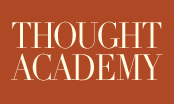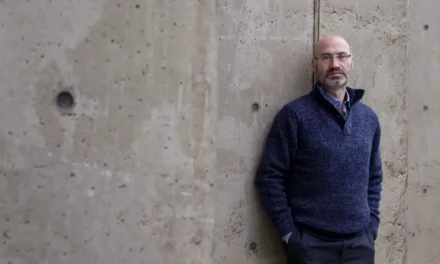
Primordial Soup for the Mind: A Parent’s Guide to Nurturing Intellectual Growth
Creating the Primordial Soup
for Your Child’s Mind
Welcome and Purpose
W
elcome to Primordial Soup for the Mind: A Parent’s Guide to Nurturing Intellectual Growth. As you turn these pages, picture your home transforming into a vibrant, nurturing haven—akin to the primordial soup that cradled the birth of life on Earth billions of years ago. In that ancient broth of chemicals and energy, the first organisms emerged, sparked by the perfect blend of conditions. Likewise, your child’s mind can flourish with curiosity, critical thinking, and creativity when you craft the right environment.
I wrote this book because I’ve seen this potential unfold in my own life. One crisp autumn day, my son and I wandered along a wooded trail. He paused, crouching beside a stream, and pointed to a glistening pebble. “Why is that rock shiny?” he asked, his voice brimming with wonder. We turned it over in our hands, speculated about its smooth surface and the water’s role, and later consulted a nature guide to confirm it was quartz reflecting the light. His eyes sparkled with delight as the answer clicked—a moment that revealed the power of a supportive setting.
You do not need elite schools or extravagant resources to replicate this. Your home, with its familiar corners and ordinary moments, can become a crucible for intellectual growth. You are the essential ingredient—your presence, your questions, your encouragement. This book is here to guide you, step by step, whether your child is starting kindergarten or preparing for high school. It is about turning routine interactions into opportunities for discovery, starting today, with what you already have.
This journey is not about perfection. I’ve learned that the best lessons often arise from simple, unplanned moments—like impromptu experiments at the kitchen counter or a sudden question during a thunderstorm. These experiences have shown me that intellectual growth does not require a classroom—it thrives in a home where questions are welcomed.
It’s written in plain language—like a conversation over coffee—because every parent, busy or not, deserves clear tools to nurture a growing mind. My goal is to help you see your role as a guide, turning your kitchen table or backyard into a place where big ideas take root.
Historical Inspiration
Throughout history, certain places and times have served as catalysts for human thought—periods when ideas flourished, creativity soared, and communities fostered intellectual boldness. What made these moments special wasn’t just brilliance—it was the environment. In this section, we’ll look at some of those golden eras, not as distant achievements, but as models. By distilling what made them thrive, we can bring their spirit into our homes and raise children who think, wonder, and contribute with clarity and courage, just as the people of those periods did.
Ancient Greece
History offers a rich tapestry of moments when great minds blossomed in fertile environments. One of the most remarkable emerged in ancient Greece, around 500 to 300 BCE, when cities like Athens hummed with intellectual life. Public squares, or agoras, became gathering places where thinkers like Socrates challenged citizens with questions like, “Is that law just?” or “What defines a virtuous life?” These weren’t passive lectures. Philosophers, poets, artisans, and ordinary people engaged in spirited contests of wisdom, mirroring the athletic fervor of the Olympics. A young person might step forward to debate, learning to articulate their thoughts with clarity and courage, their voice rising above the marketplace din. The freedom to speak, argue, and stumble built resilience and confidence, forging a legacy of intellectual boldness that shaped Western thought.
The brilliance of Greece arose not from peace or comfort, but from a crucible of opportunity and disruption. Wars and trade routes brought diverse peoples into contact, clashing ideas and shattering assumptions. Unlike the rigid hierarchies of neighboring kingdoms, Athenian democracy allowed voices to rise and compete, creating a dynamic arena for thought. A child might overhear a merchant ask, “Why is the sky blue?” and be drawn into the discussion—driven by curiosity rather than formal instruction. This environment shaped philosophers like Plato and Aristotle, who turned bold questions into lasting wisdom.
You can recreate this spirit at home. Turn your kitchen table into an agora of ideas. Ask your child, “Why does the wind blow?” and support their search for answers through observation, conversation, or a quick online search. You might help them build a simple anemometer from paper cups and straws. Their mind sharpens with each challenge, just as the Greeks’ did, fueled by your interest and enthusiasm. Encourage reason and experimentation. Foster a space where children feel free to question and explore, turning each walk or meal into a chance for discovery—and celebrating their efforts with a shared laugh or hug.
The Renaissance
Now, let us leap to the Renaissance, spanning the 14th to 17th centuries, when Italian cities like Florence and Venice stirred awake after a long intellectual dormancy. Scholars rediscovered Greek and Roman texts, asking, “How can these ancient ideas shape our world today?” Artists like Leonardo da Vinci dissected birds to unlock the mystery of flight, filling notebooks with sketches and hypotheses that danced between art and science. Wealthy patrons fueled this creativity, fostering rivalries—whose dome would stand tallest, whose portrait would capture the soul?—turning cities into arenas of ambition, where young minds learned by doing.
Children apprenticed in these workshops, mixing pigments and asking, “Why does that shadow fall so darkly?” They learned through hands-on effort, their questions shaping their skill. The competitive spirit pushed them to excel, blending play with purpose. Your home can echo this energy. Offer your child simple tools that invite imagination, showing that a nurturing environment, spiced with challenge, can unlock a child’s potential.
The Renaissance thrived because it embraced curiosity and loosened the grip of tradition. Trade routes brought spices, books, and new ideas, opening families to wider perspectives. Confidence grew as children’s efforts took tangible form—cathedrals rose, paintings shimmered with innovation. You can mirror this by inviting your child to create something and explain why it works—whether it’s a drawing, a contraption built from scrap materials, or a story. Their pride deepens as their ideas take shape, and your home becomes a Renaissance workshop—where acts of creation are met with attention and joy.
The Enlightenment
The Enlightenment, spanning the 17th to 18th centuries, built on earlier eras with a passion for reason, discovery, and debate. Isaac Newton watched an apple fall and wondered, “Why does it move downward?”—unraveling gravity’s pull through careful experiments. John Locke examined the mind itself, probing, “How do we come to know what we know?” Coffeehouses in London and Paris became hubs of intellectual exchange, where citizens debated philosophy, science, and governance over cups of steaming drink. While the cafés and salons belonged to adults, the spirit of inquiry filtered home—children absorbed it through books, family conversations, and the questioning habits it inspired.
Science and logic took center stage, unshackled from superstition and rigid tradition. Ideas were tested, not taken for granted. You can bring this spirit into your home by encouraging your child to observe the world closely and ask thoughtful questions. When they form ideas and seek evidence—whether through books, conversation, or observation—they build the habits of reason the Enlightenment so fiercely prized.
Much of the Enlightenment’s power lay in its culture of questioning. Printing presses spread knowledge, sparking challenges to long-held assumptions. Families argued over pamphlets and ideas at their tables, and children absorbed that curiosity. You can echo this by inviting thoughtful conversations around what’s true, what’s uncertain, and how we know the difference. When children pursue answers through reasoning and evidence rather than guesswork, they strengthen the foundation for lifelong learning.
A home where questions are welcomed and truth is pursued becomes its own salon of ideas. With encouragement and dialogue, you raise children who seek understanding, weigh evidence, and speak with clarity—just as the Enlightenment thinkers did.
19th Century Vienna
In 19th-century Vienna, a different kind of brilliance emerged. Music soared as Beethoven composed with fervor, while artists like Gustav Klimt filled canvases with golden swirls. Coffeehouses buzzed with poets, scientists, and dreamers deep in conversation. Children absorbed the city’s creative pulse at home, in galleries, and through family conversations. Failure wasn’t shamed—it was understood as part of the journey, and brilliance took time.
This liberty to experiment fueled a cultural explosion. At home, you can echo this spirit by giving your child space to explore—sketching, building, or storytelling without the pressure to “get it right.” When children are free to try, fail, and try again, their imagination expands. What matters is not perfection, but momentum—the sense that their ideas are welcome and worth revisiting.
Vienna thrived on diversity. Jews, Germans, French, and Hungarians mingled, bringing distinct perspectives into shared spaces. Sigmund Freud began probing the hidden layers of the mind, asking, “Why do we dream?” Children grew up watching art and science intertwine, learning that imagination knows no limits and boundaries are meant to be crossed.
When children are invited to mix forms, styles, or ideas, their creative confidence grows. A home that welcomes experimentation becomes its own café of invention, where failure is met not with judgment but with curiosity—and every attempt is reinforced with attention, freedom, and love.
Early 20th Century Paris
Early 20th-century Paris carried the intellectual torch into new terrain. Pablo Picasso revolutionized art with bold strokes, while Jean-Paul Sartre explored existential questions in bustling cafés. Poets, painters, and philosophers debated across disciplines, challenging one another with fresh ideas. Though children weren’t seated beside them, they grew up in homes shaped by this spirit of reinvention—where experimentation was prized and expression was fearless.
Collaboration fueled these breakthroughs. Artists and thinkers pushed each other to new heights, not in isolation but in community. That same spirit can thrive in your home when children are encouraged to solve problems together, to listen, build, and revise with others. Their resilience grows not just from success, but from the process of working alongside others toward something meaningful.
Paris also thrived through adversity. After the upheaval of a devastating war, artists, immigrants, and citizens sought meaning in shared ideas and bold expression. The city became a haven for exiles and innovators, where diverse voices converged in cafés, journals, and studios. Families wrestled with hard questions around kitchen tables and café corners, learning together. You can echo this by creating a culture of shared inquiry—where ideas are exchanged freely, and challenges are met with both imagination and care.
When children grow up in environments that value collaboration, expression, and critical dialogue, they develop not just intellect, but empathy and endurance—preparing them to shape the world with both conviction and compassion.
Why I Wrote This
I poured my heart into these pages out of both exhaustion and determination—exhausted from watching children, my own included, squeezed into a system that doesn’t recognize their brilliance, and determined to offer a lifeline. Schools drill kids in testing and grading, turning vibrant souls into mechanical repeaters. Beyond the classroom, society piles on noise, distraction, and herd mentality, choking off their questions until the spark fades. I’ve seen it happen—their eyes dim, their curiosity buried under busywork and screens—and it breaks my heart.
But I’ve also seen the other side: the moment a child’s potential breaks free and soars. Give them space to wonder, and they ask bold questions. Let them reason aloud, and they grow sturdy and thoughtful. Ancient Greece understood this—their agoras rang with debate. The Renaissance echoed it—artists flourished because they were free to explore.
Today, that freedom is buried beneath schedules, testing, and digital clutter. But you can bring it back. This isn’t about raising instant geniuses—it’s about giving your child a real chance to think deeply, question boldly, and grow into their fullest self. Your home is the starting line. Your voice is the spark. You don’t need to wait for the system to change—start tonight.
How to Read This Book
You don’t have to read this book from beginning to end. You can—but you don’t have to.
It’s designed to support you in more than one way. If you want to read it in order, each chapter builds naturally on the last. You’ll move from helping your child find their voice, to expanding their curiosity, to developing resilience, purpose, and moral clarity. But if you’re here because you’re facing a specific challenge—or you’re looking to nurture a particular trait—you can start wherever it makes sense.
Each subtopic stands on its own. You can flip to one section, test out a few ideas, and come back for more later. There’s no single “right” path through the book—just the one that meets your needs right now.
To help you navigate, you’ll find three special guides just after this introduction. One organizes the subtopics by subject, such as fostering communication, encouraging curiosity, or developing critical thinking. The next guide groups by theme: curiosity, courage, collaboration, and so on. The other addresses real questions parents often ask—like how to build confidence, deal with frustration, or help a child take creative risks—and offers thoughtful paths through the book in response.
You can follow any of these trails. You can wander. You can stop, start, and skip ahead. This book was made to meet you where you are, and to walk with you through what comes next.
Click here to explore.
Book Goals and Structure
This book offers a clear, actionable path through nine chapters, each inspired by a historical era of intellectual flourishing and filled with practical ways to nurture your child’s growth.
- Chapter 1: Fostering Freedom of Expression – Children thrive when they can voice their thoughts without fear. This chapter helps you create a home environment where ideas are welcomed, confidence grows, and communication becomes a powerful tool for learning and connection.
- Chapter 2: Embracing a Rich Tapestry of Ideas – Exposing kids to diverse perspectives expands their minds and sharpens their judgment. This chapter shows you how to introduce varied worldviews, cultures, and historical insights to build empathy, curiosity, and independent thinking.
- Chapter 3: Supporting Creative Pursuits – Creativity is more than art—it’s a mindset. Here you’ll learn how to foster imagination through materials, space, and support, helping your child turn ideas into action and develop problem-solving skills that cross disciplines.
- Chapter 4: Fostering Collaboration and Teamwork – From family chores to group debates, collaboration teaches resilience and perspective. This chapter offers strategies to help your child work with others, resolve conflicts, and contribute meaningfully in social and intellectual settings.
- Chapter 5: Promoting a Love for Learning – A love of learning sets the foundation for lifelong growth. This chapter helps you weave curiosity into everyday life—at the grocery store, on a walk, or during dinner—so your child sees learning as something joyful and constant.
- Chapter 6: Modeling Intellectual Growth – Your example matters. This chapter shows how your own habits of curiosity, reasoning, and emotional intelligence shape your child’s mindset. It offers tools to model what it means to think deeply, grow steadily, and stay open to learning.
- Chapter 7: Training Thinking Athletes – Mental strength can be built like a muscle. You’ll learn how to sharpen your child’s reasoning, memory, focus, and problem-solving skills through daily challenges that stretch their intellect and build resilience.
- Chapter 8: Nurturing Lifelong Curiosity – Curiosity is the fuel behind all learning. This chapter helps you create a culture of wonder, where your child’s questions are celebrated and their desire to explore the world becomes a steady, joyful habit.
- Chapter 9: Forging a Life of Purpose and Resilience – Guides you in helping children form a philosophy of life—one grounded in reason, personal integrity, and meaningful contribution. This chapter shows you how to nurture moral clarity, independence of thought, and inner strength, empowering children to build not just careers or accomplishments, but lives of purpose and principle.
Together, these chapters form a flexible toolkit. You’ll find family challenges, science experiments, logic games, and everyday examples—like museum visits, cooking projects, or a question at dinner—that turn ordinary moments into opportunities for growth.
This is your roadmap. You don’t need expert training or expensive tools—just your time, your presence, and the belief that small, daily actions can grow a mind that’s ready to think boldly and live fully.
Who This Is For
This book is for parents raising children between the ages of five and fifteen—though the ideas inside reach younger and older minds too. You don’t need a teaching background or hours of free time. What matters is that you care, and you’re willing to act.
You already have what your child needs: attention, curiosity, and love. This book simply helps you turn everyday moments—conversations, questions, observations—into sparks for growth. Start small. Start today. You’ll be amazed what unfolds.

Table of contents

Primordial Soup for the Mind: Navigation
Navigate the book Primordial Soup for the Mind.



